Paulo Cunha e Silva Art Prize
Created by the City Council as a tribute to the late Councillor for Culture Paulo Cunha e Silva (1962 – 2015), a central figure for the city’s artistic life, the award, held every two years in Porto, recognises the talent of new generations of national and international artists.
This year’s edition underlines the Prize’s commitment to fostering creation and cultural exchange by establishing a partnership with three world-recognised residency programmes: Arquipélago Centro de Artes in S. Miguel, Azores, Cove Park, on Scotland’s West Coast, and Pivô, in São Paulo, will all host one of the nominated artists, appointed by a jury of three members.
The Nominators for the 2023 edition of the Paulo Cunha e Silva Art Prize are: artist Ângela Ferreira, Jan van Eyck Academie Director Hicham Khalidi, and cultural programmer Tabitha Thorlu-Bangura.
With: Euridice Zaituna Kala, Marilú Mapengo Námoda and Luis M. S. Santos (nominated by Ângela Ferreira); Rouzbeh Akhbari, Kent Chan and Hira Nabi (nominated by Hicham Khalidi) and Maren Karlson, Malik Nashad Sharpe (Marikiscrycrycry) and Eve Stainton (nominated by Tabitha Thorlu-Bangura).
Design by Irina Pereira.
17.06 – 27.08.2023
Design by Irina Pereira.
17.06 – 27.08.2023
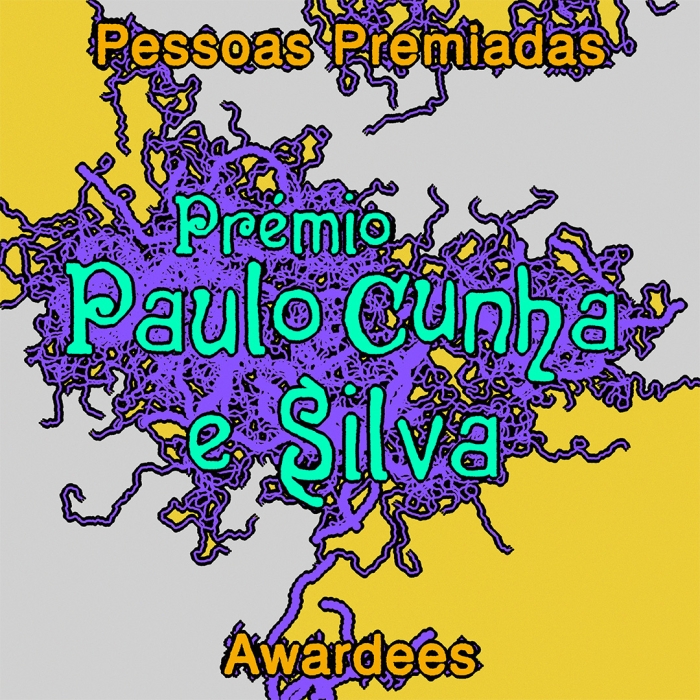
Paulo Cunha e Silva Art Prize
Statement from the jury of the 3rd edition of the Paulo Cunha e Silva Art Prize: Marie Hélène Pereira, Ciara Phillips, Letícia Ramos
"We would like to begin by expressing our deep gratitude for the opportunity to encounter and respond to artworks by Rouzbeh Akhbari, Kent Chan, Euridice Zaituna Kala, Maren Karlson, Hira Nabi, Marilú Mapengo Námoda, Luis M. S. Santos, Malik Nashad Sharpe (Marikiscrycrycry) and Eve Stainton at the Galeria Municipal do Porto. The Paulo Cunha e Silva Art Prize is an enriching exhibition showcasing a broad range of approaches from performance to installation,
printmaking, painting, sculpture and moving image, and foregrounding a wide range of
thematic concerns. The present and painful effects of colonialism, coupled with reflections on the climate crisis, are recurring threads explored through personal narratives, bodily
transformation and the reworking of timelines to evoke complex chronologies. As the jury for this prize, it has been an energizing experience to learn more about each artist’s practice
through viewing their works in Porto.
We wish to express our appreciation for the Prize’s focus on supporting artists’ practices by
enabling further research, development and production of new work, and to that end we have been entrusted with selecting three artists to put forward for residencies at: Arquipélago
Centro de Artes Contemporâneas, in São Miguel, Azores; Cove Park, on the West Coast of Scotland; and Pivô Arte e Pesquisa, in São Paulo, Brazil. We have based our selection on what we encountered in the exhibition at the Galeria Municipal do Porto, taking into consideration the artist’s overall trajectory, and knowledge of what each residency site offers. In this regard, we are delighted to announce that:
• Marilú Mapengo Námoda has been awarded a residency at Arquipélago Centro de Artes Contemporâneas;
• Luis M. S. Santos has been awarded a residency at Cove Park;
• Kent Chan has been awarded a residency at Pivô Arte e Pesquisa.
About the awardees:
Marilú Mapengo Námoda’s take on tongue knowledges – and the politics of erasure that have long been operated on the traditional languages from her home country in Mozambique –, left a strong impression on us. Knowing that colonial educational structures all the way to
contemporary systems of education have kept the oppression alive, we believe that such a
work needs to be given more space and attention in order to dig deeper into the ways in which traditional tongues and the knowledges they hold could and should constitute a basis for
learning. Memories of a dog’s tongue welcomes the viewers into a dark room with a mound of soil on which they can watch moving images: a group of women working the land, followed by images of Marilú performing with the ability and disability of her tongue and mouth to just swallow anything that is presented to her; the natural act of choking becomes a political act. The presence of the soil is a reminder for rootedness and groundedness, standing firm against the erasure of the knowledges that sustained the Echuwabo language and Bantu communities for multiple generations prior to the arrival of the foreign oppressors. The scent of the earth,
the contours of the mound, all create a visceral experience in relation to the subject – i.e. the forcible repression of language. Marilú’s work brings us to a state of discomfort. It is triggering for the viewer and is very successful in conveying the performative through
sculpture/installation.
What would it mean to pursue such work in residency at Arquipélago Centro de Artes Contemporâneas, in São Miguel, Azores?
The residency program of Arquipélago puts a strong emphasis on the need for contemporary societies to be in permanent reflection, given the constant changes that people face at
political, geopolitical, economic, financial, social, cultural and technological levels. We believe that this encounter with artist Marilú Mapengo Námoda will contribute to build critical
reflections on the role of artists and art practitioners in the transformation of society.
Arquipélago has developed a set of programs and structures that allow for artists in residence to have the opportunity to connect with the local communities, schools, female and non-binary associations in order to learn and create together.
Luis M. S. Santos’ intriguing and playful three-legged sculptures, Void (2022) and
Fragments of Being #1 (2023), spoke to us immediately of a practice rooted in imaginative and exploratory material investigation. Carved and painted wood, ceramic, iron, straw and straps bind together the found with the carefully crafted, creating configurations that feel part
celebratory, part in conflict - self-assured, yet also in turmoil. In this way they capture some essence of what it means to be alive in this present moment. A lingering disquiet emanates
from Santos’ sculpture, TV Contraption (2022), presented as part of this trio under the title All of this always happens simultaneously. Here, a bowed head hovers over a television monitor, face aglow, while digital animations of itself and its associates scroll by. How is the transfixed human head processing the translation from a three-dimensional sculpture to an animated avatar moving through digital space? Will it ever be able to lift its head from this self-reflexive loop? A work full of pathos and humour, Santos’ group of sculptures cleverly open up a critical
space to reflect on many of the ambiguous and conflicting dilemmas we currently live with. We greatly appreciate the accessibility of Santos’ work and respond to both its material intrigue and conceptual dimension.
With all of the above in mind, we have awarded Luis M. S. Santos the residency at Cove Park on the West Coast of Scotland. Located on a sloping hillside overlooking Loch Long, Cove Park is an international residency centre supporting contemporary art production in all forms and for artists at all stages of their careers. Many well known and well-respected writers, artists,
performers and musicians have used their time at Cove Park to further develop their work in the quiet of their own studios but with the benefit of being surrounded by a community of
fellow practitioners. Opportunities to engage with the dynamic art scene in nearby Glasgow is a potential further benefit, and we hope that the experience of Cove Park can open up
opportunities for Santos’ work to be seen in new contexts.
Kent Chan presents us a future in which the museum is formed by the symbiosis
between archeology, ancestral thought and machines created by humankind. They are simulacres of microclimates in which, body and nature are part of the same system, like a prosthesis. In addition to contemporary debates about traditions, climate and nature Chan’s fictional narratives dialogue with the tropical imagination. These narratives, also hybrid in form, explore the context, politics and aesthetics of heat and warming.
The Warm Fronts & Future Tropics pieces group proposes a fusion between past and future in which technology, humans and nature are a single body, like a cyborg.
Frequently it is said that plants cannot run away, they adapt themselves. Some deepen
their roots hoping for a sunnier time, others disseminate seeds to procreate, extend their branches along the ground to form new roots, while others fly. In the fiction of Future Tropics, these eternal migrants search for new microclimates, wandering endlessly in the ocean
without being able to disembark. A metaphor for the uncertain future. Where are we going to land?
"Having the privilege of landing. We are here, but we are going to another place all the time" (Kent Chan, Future Tropics, 2022) *
Pivô is a cultural space in the center of São Paulo, the second largest city in South
America, located in a specific microclimate within the triangle formed by the streets
Ipiranga, Consolação and São Luiz in the neighborhood of República. At Pivô, we imagine that Kent Chan will certainly be part of the diversity of knowledge about the tropical urban
landscape exchanging with resident artists from different parts, contexts and references of Brazil.
We congratulate all the artists nominated for the Paulo Cunha e Silva Art Prize, and we wish Marilú Mapengo Námoda, Luis M.S. Santos and Kent Chan all the success on their residencies."
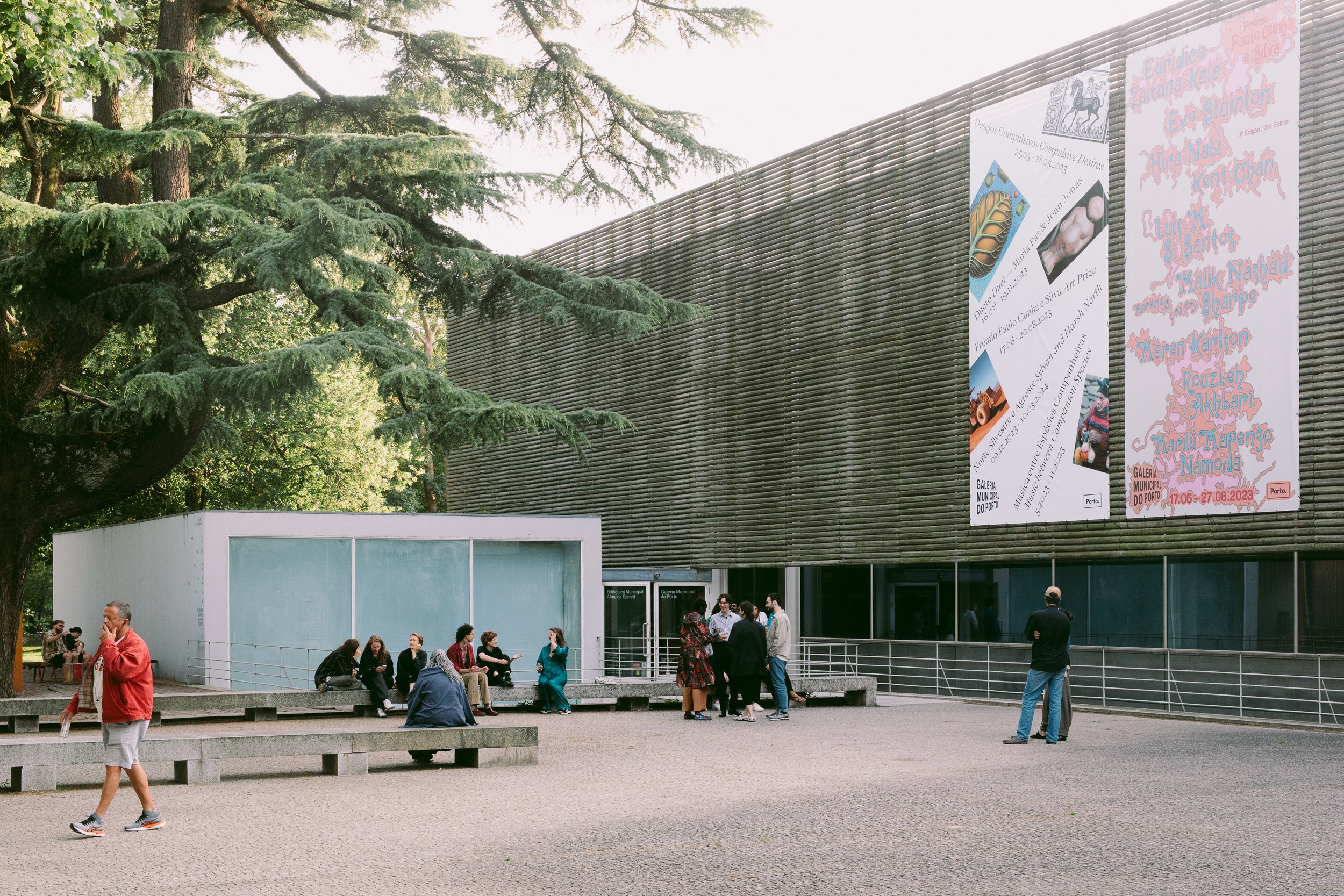

June 17, at 6 pm
Opening: Prémio Paulo Cunha e Silva
On Saturday, June 17, the Galeria Municipal do Porto opened its doors to open the exhibition resulting from the third edition of the Paulo Cunha e Silva Art Prize.
The exhibition project, which has been strengthening cultural exchange and contemporary artistic creation, occupied the two floors of the Gallery space with works by nine artists from different backgrounds, experiences and origins.
Between the months of June and July, a public programme dedicated to each of the artists will be presented, to be announced soon.
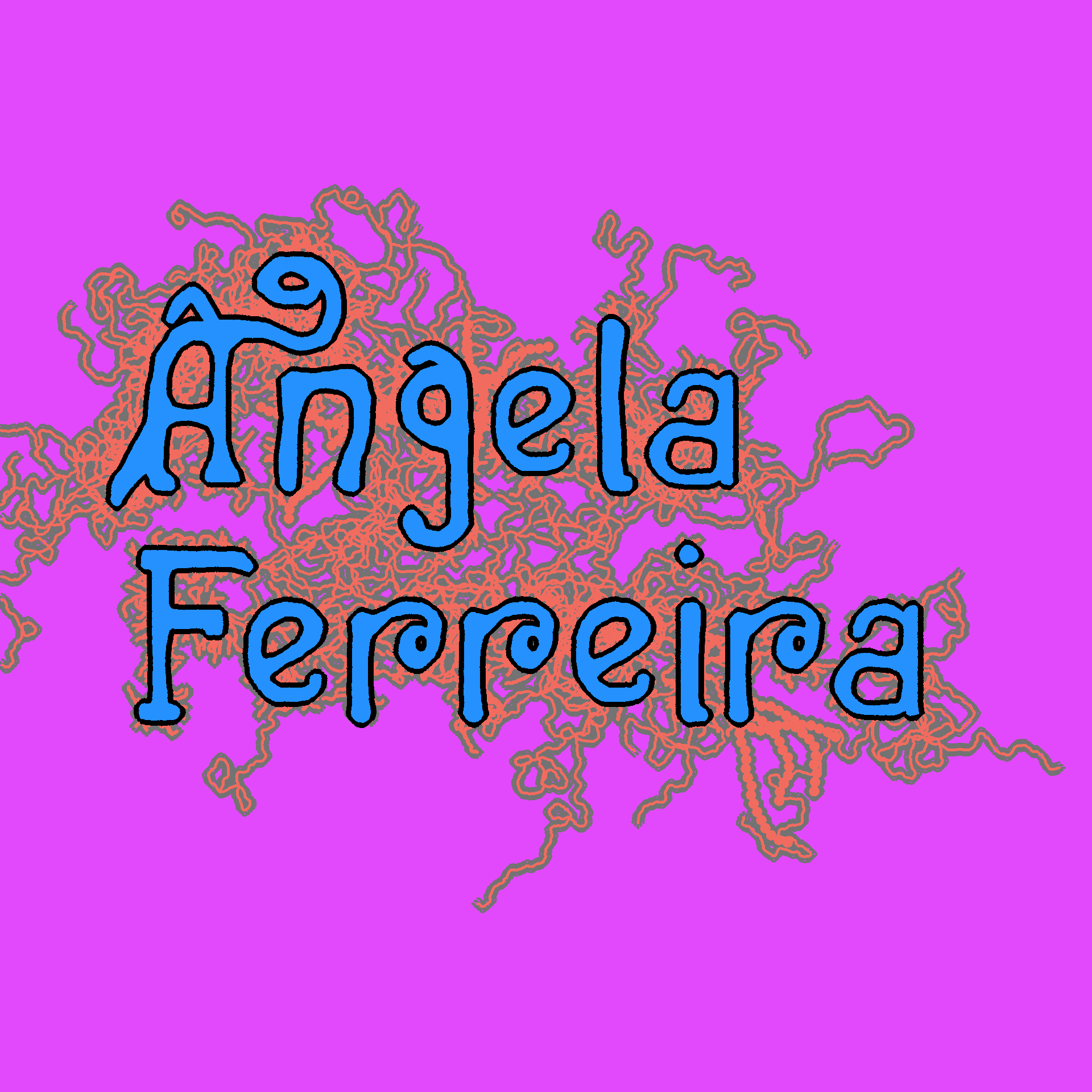

Nominations by Ângela Ferreira
Euridice Zaituna Kala, Marilú Mapengo Námoda & Luis M. S. Santos
Zaituna, aka Euridice Kala, (b. Mozambique, lives in Paris) is a visual artist who has been highlighting in her practice the multiplicity of narratives within historical periods and social relations, using her country as a point of departure – from the perspective on what Léopold Sédar Senghor calls the "kingdom of childhood" – which is at the heart of her reflections. Kala's work, which focuses on metamorphoses, manipulations, and adaptations of history, takes the form of installations, performances, images, objects, and books.
Marilú Mapengo Námoda (b. Mozambique, lives in Maputo) is an artist and activist who has been focusing on the politics towards new futures. In her research, she questions the possibility of Love as a political tool for healing the colonial wound, in its multiple expressions: from racism to sexism, classism and others. Námoda has explored hybrid formats and media, allowing a greater openness of artistic sharing, beyond the institutional display. She crosses several areas and languages, such as Performance, Animist Astrology, Storytelling, Bantu symbolic writing, healing rituals and post-activist workshops.
Luis M. S. Santos (b. Mozambique, based in Maputo) is a sculptor who conceives his pieces as living entities, inhabitants of natural and inhospitable places, far from society. The social and cultural context has served as a basis to think about the disharmony between humans and nature, materialized through forms, textures, colours and contrasting materials, enriched by games of rhythm, break and fluidity.
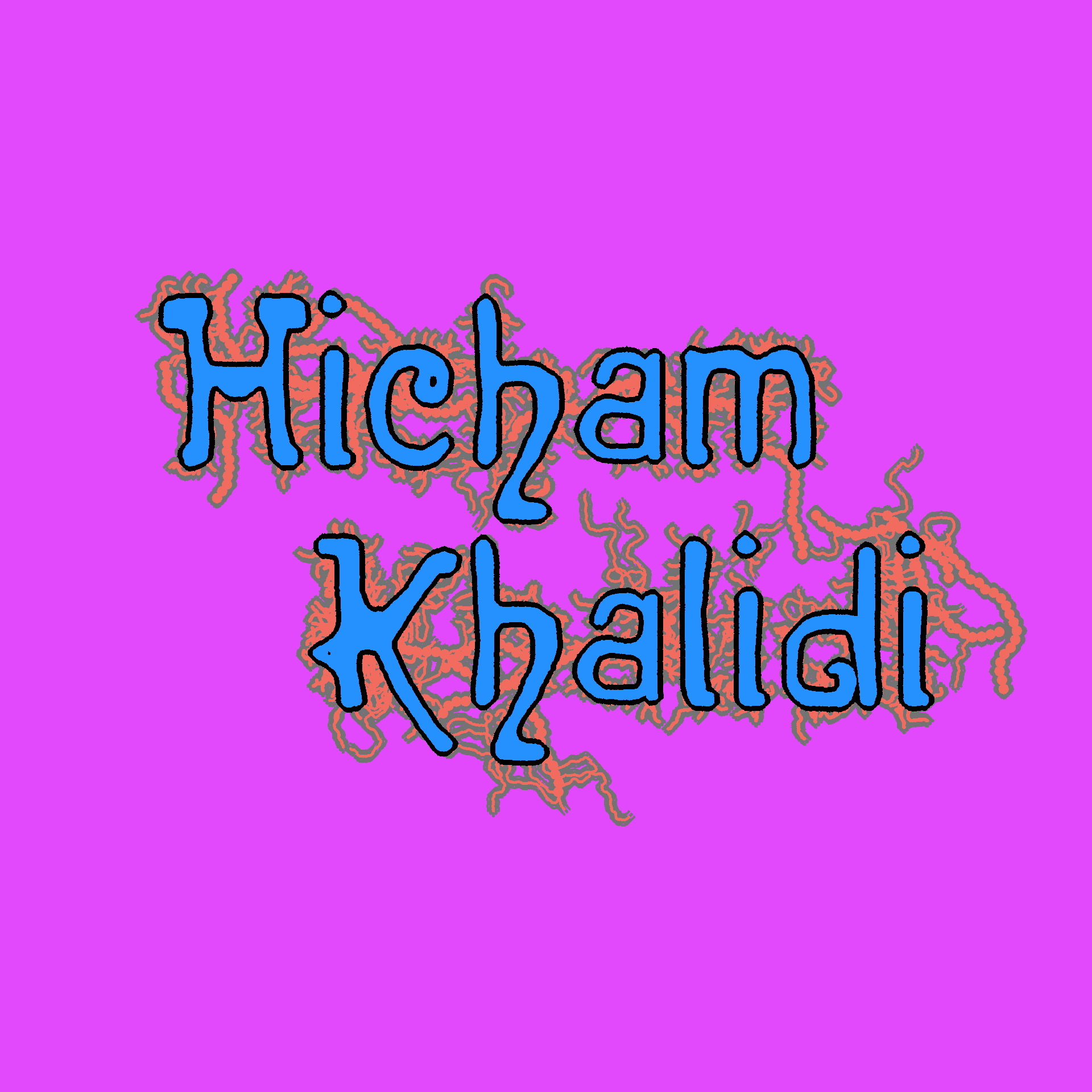

Nominations by Hicham Khalidi
Rouzbeh Akhbari, Kent Chan and Hira Nabi
Rouzbeh Akhbari (b. Irão, based in Lisbon) is an artist working in video installation and film. His research-driven practice usually exists at the intersections of storytelling, political ecology, critical border studies, and human geography. Through a delicate examination of the violences and intimacies that occur at the boundaries of lived experience and constructed histories, Akhbari uncovers the minutiae of power that organize and regiment the world around us.
Kent Chan (b. Singapura, based in Amsterdam and Singapore) is an artist, curator and filmmaker. His practice revolves around our encounters with art, fiction and cinema that form a triumvirate of practices porous in form, content and context. He holds particular interest in the tropical imaginary, the past and future relationships between heat and art, and contestations to the legacies of modernity as the epistemology par excellence. The works and practices of others often form the locus of his works, which have taken the form of film, text, conversations and exhibitions.
Hira Nabi (b. Pakistan, based in Maastricht) is a Pakistani filmmaker and visual artist who uses moving images, text, installations, and printmaking, to think through vulnerable ecologies, conditions of labor, memories, and temporality. In her work, witnessing is an act charged with radical possibility, and one that holds immense potential for collective responsibility and love.
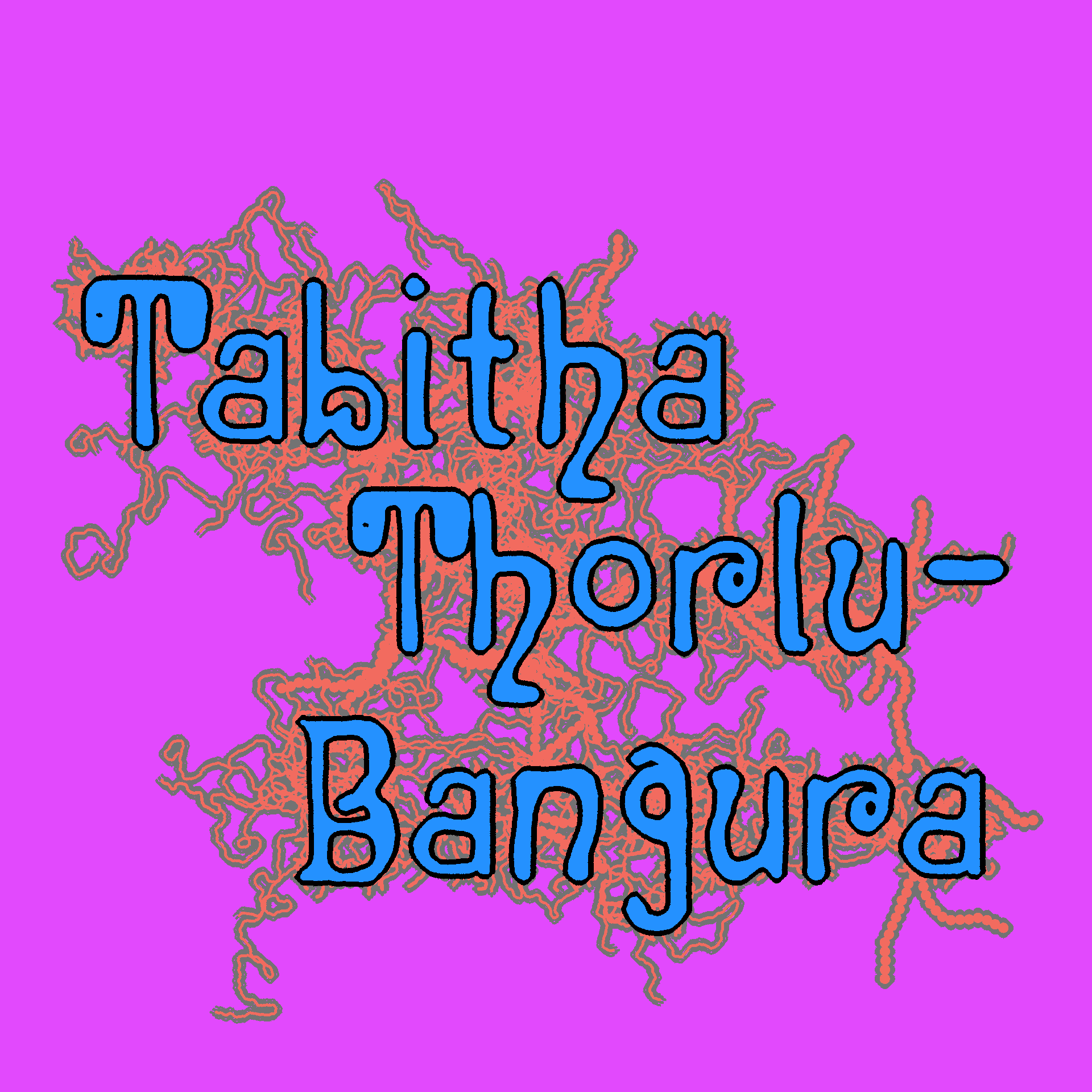

Nominations by Tabitha Thorlu-Bangura
Maren Karlson, Malik Nashad Sharpe and Eve Stainton
Maren Karlson (b. Germany, based in Los Angeles) is a visual artist who has been embodying her practice through drawing and painting. Her pieces inhabit the intersection between reality and fantasy, crossing layers of perception, in a permanent questioning that permeates cosmic and psychedelic universes.
Malik Nashad Sharpe, also known as Marikiscrycrycry (b. USA, based in London), is an artist and choreographer known for his provocative and formally engaging performance works that address themes of violence, alienation, horror, melancholia, and the horizon.
Eve Stainton (b. UK, based in London) is interested in the politics of uncodeable queer presence and its intersections with race and class. They create multi-disciplinary performance worlds that hold movement practices, digital collage, welded steel, and other invisible forces like waves/imagination/drama, often psychedelic and clashing. Staiton is interested in co-occurence as a way to unravel essentialist thinking, with intent to create more expansive understandings of the lesbian identity, non-gender/variance, and perceptions of the "real".
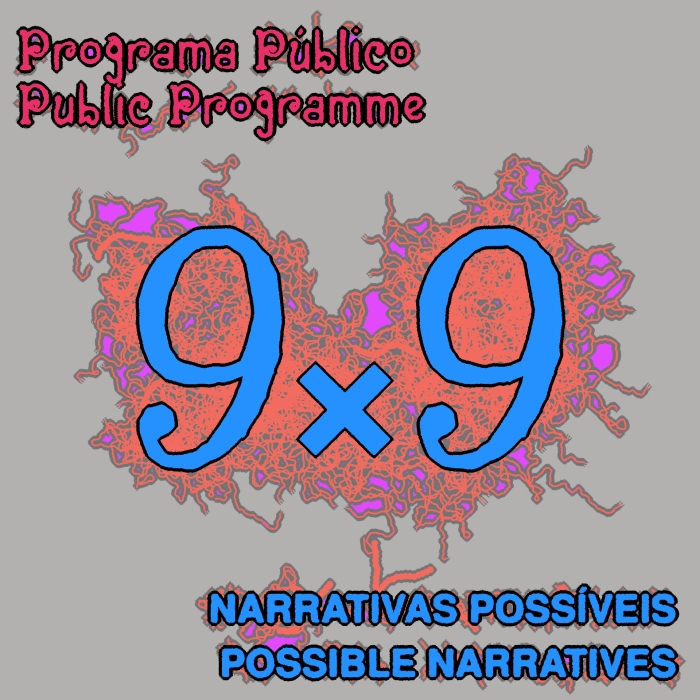
Public Programme
9x9 - Possible Narratives
During the exhibition period, a public programme was designed consisting of nine visits that will focus on the works of each of the participating individuals, reflecting on their possible narratives.
This programme will be presented on Tuesdays and Thursdays at 6pm by the Gallery's artistic team, with the following schedule:
- June 20: Kent Chan
- June 27: Luis M. S. Santos
- July 04: Eve Staiton
- July 06: Marilú Mapengo Námoda
- July 11: Hira Nabi
- July 13: Euridice Zaituna Kala
- July 18: Malik Nashad Sharpe (Marikiscrycrycry)
- July 25: Maren Karlson
- July 27: Rouzbeh Akhbari
In addition to these, the usual guided tours of the exhibition will take place on the first Saturday of every month, on 1 July and 5 August, at 4pm.
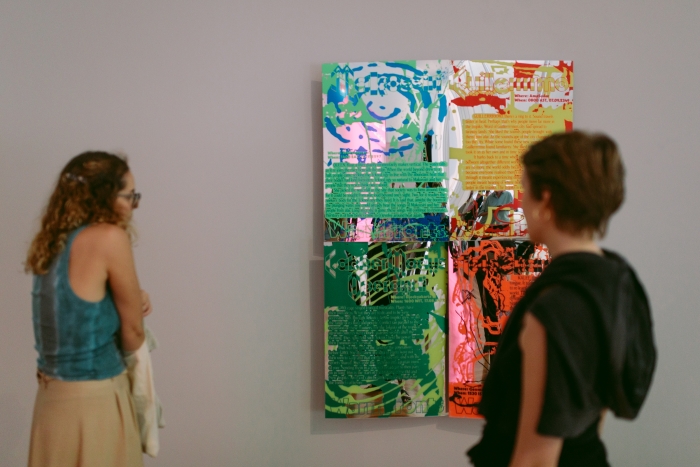

Guided tour |Tuesday, June 20, at 6pm
9x9, Possible Narratives: Kent Chan
During the period of the exhibition nine guided tours have been designed addressing the works of each of the participating artists.
The first session focused on the pieces 𝘍𝘶𝘵𝘶𝘳𝘦 𝘛𝘳𝘰𝘱𝘪𝘤𝘴 and 𝘞𝘢𝘳𝘮 𝘍𝘳𝘰𝘯𝘵𝘴, by Kent Chan.
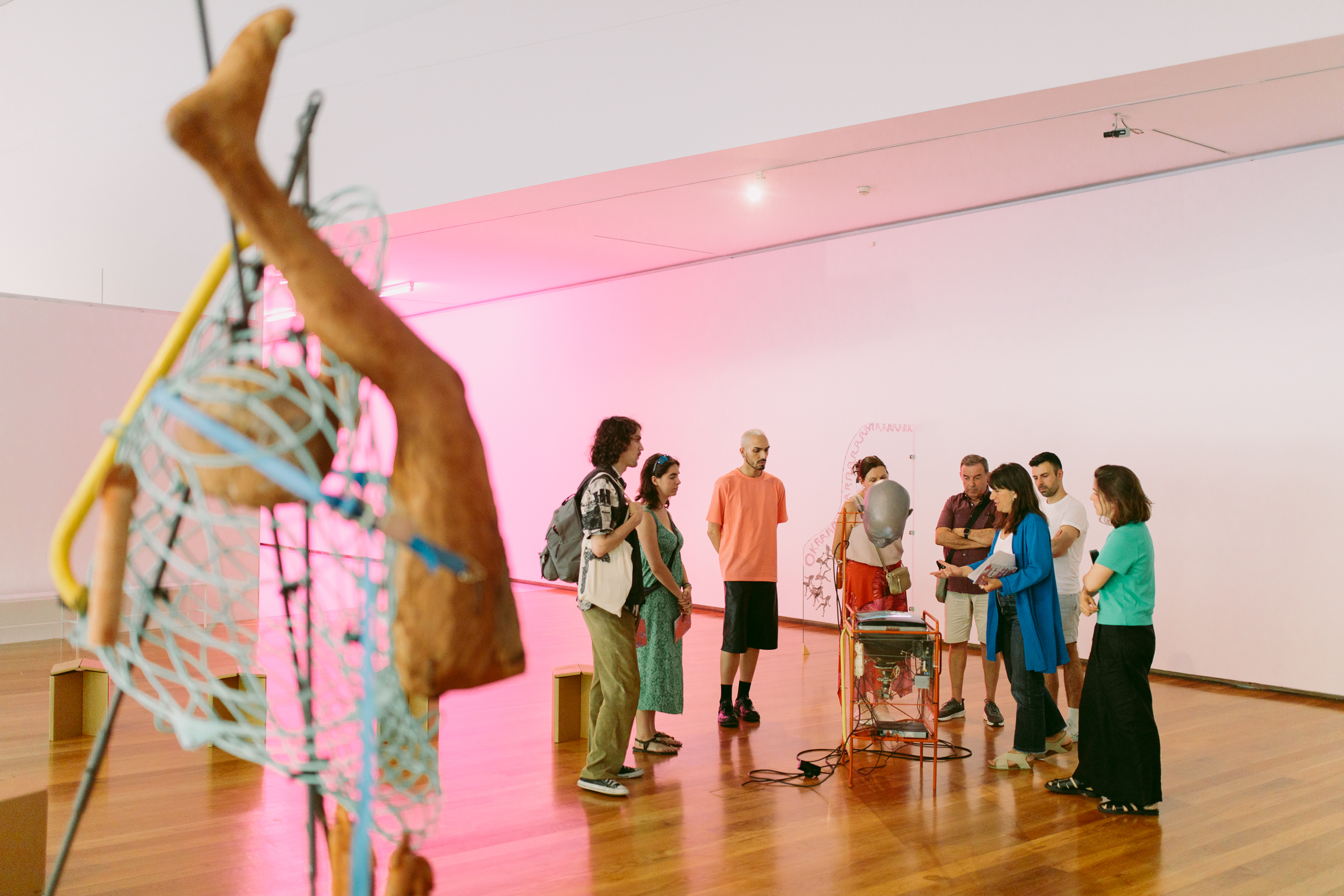

Guided tour | Tuesday, June 27, at 6pm
9x9, Possible Narratives: Luis M. S. Santos
The second session centered on the pieces 𝘍𝘳𝘢𝘨𝘮𝘦𝘯𝘵𝘰𝘴 𝘥𝘦 𝘚𝘦𝘳 #1, 𝘝𝘰𝘪𝘥 & 𝘛𝘝 𝘊𝘰𝘯𝘵𝘳𝘢𝘱𝘵𝘪𝘰𝘯, by Luis M. S. Santos.
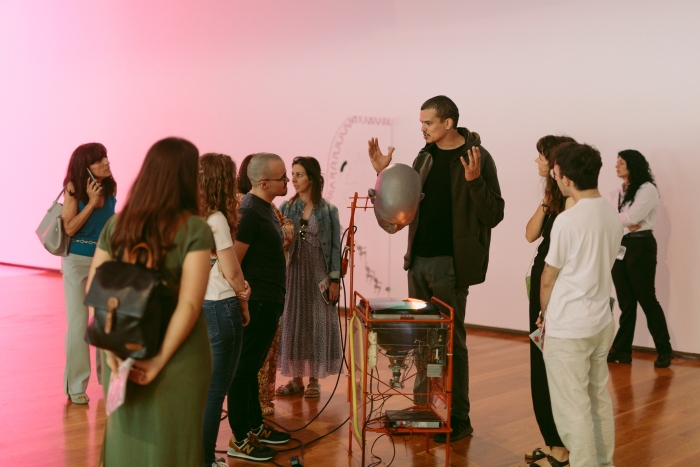
Saturday, July 1, at 4 pm
Guided tours of the exhibition
The Galeria Municipal do Porto carries out a guided tour of the exhibitions on the first Saturday of each month.
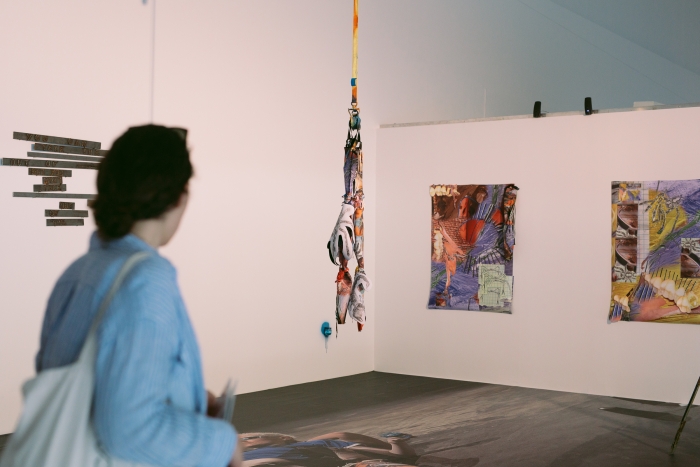

Guided tour | Tuesday, July 4, at 6 pm
9x9, Possible Narratives: Eve Stainton
The second session focused on the piece 𝘋𝘺𝘬𝘦𝘨𝘦𝘪𝘴𝘵 𝘙𝘦𝘮𝘢𝘪𝘯𝘴 𝘢𝘯𝘥 𝘚𝘵𝘦𝘦𝘭 𝘚𝘦𝘯𝘵𝘦𝘯𝘤𝘦𝘴, by Eve Stainton.
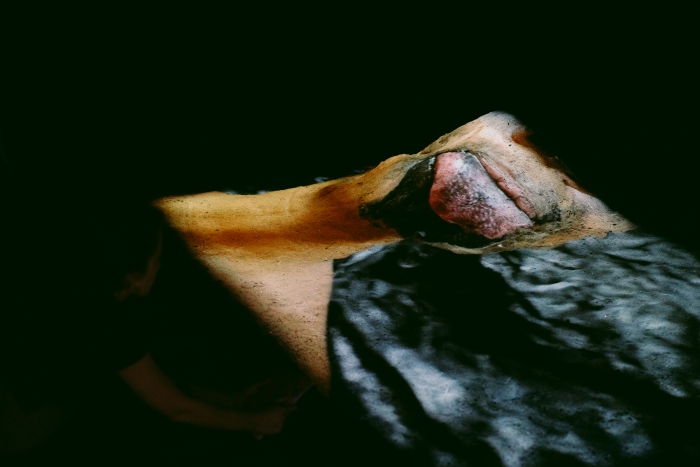

Guided tour | Thursday, July 6, at 6pm
9x9, Possible Narratives: Marilú Mapengo Námoda
The fourth session will focus on the piece 𝘔𝘦𝘮𝘰́𝘳𝘪𝘢𝘴 𝘥𝘦 𝘶𝘮𝘢 𝘓𝘪́𝘯𝘨𝘶𝘢 𝘥𝘦 𝘊𝘢̃𝘰, by Marilú Mapengo Námoda.
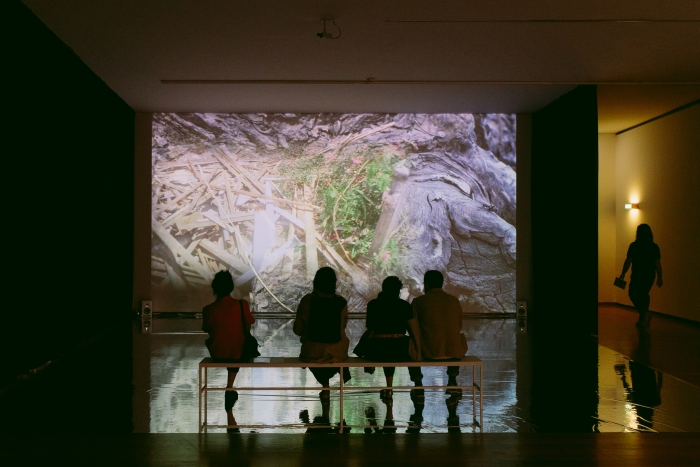

Guided tour | Tuesday, July 11, at 6pm
9x9, Possible Narratives: Hira Nabi
The fifth session will focus on the piece 𝘏𝘰𝘸 𝘵𝘰 𝘓𝘰𝘷𝘦 𝘢 𝘛𝘳𝘦𝘦 & 𝘞𝘪𝘭𝘥 𝘌𝘯𝘤𝘰𝘶𝘯𝘵𝘦𝘳, by Hira Nabi.
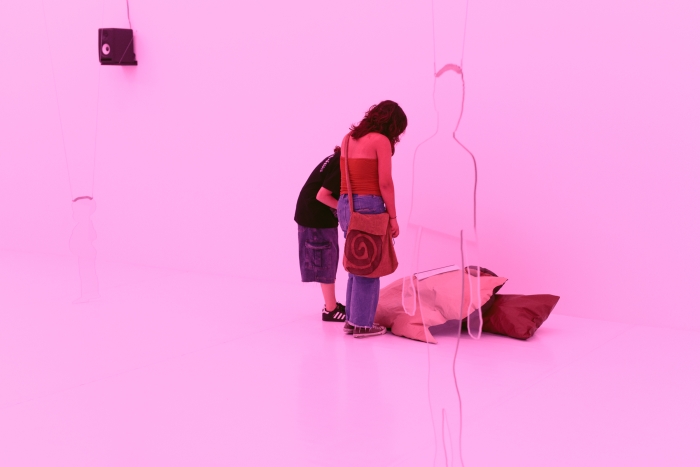
Guided tour | Thursday, July 13, at 6pm
9x9, Possible Narratives: Euridice Zaituna Kala
The sixth session will focus on the piece 𝑇𝑤𝑒𝑟𝑘𝑖𝑛𝑔 𝑀𝑎𝑟𝑖𝑒: 𝐿𝑎 𝐷𝑎𝑛𝑠𝑒 𝐸𝑛𝑡𝑟𝑒 𝐽𝑜𝑠𝑒́𝑝ℎ𝑖𝑛𝑒 𝐵. 𝑒𝑡 𝑀𝑎𝑟𝑖𝑎 𝑉 & 𝐽𝑒 𝑆𝑢𝑖𝑠 𝐿'𝑎𝑟𝑐ℎ𝑖𝑣𝑒/𝐼, 𝑇ℎ𝑒 𝐴𝑟𝑐ℎ𝑖𝑣𝑒, by Euridice Zaituna Kala.
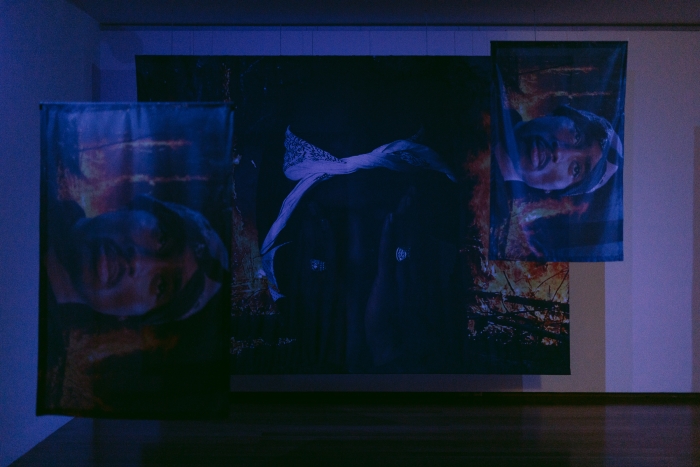
Guided tour | Tuesday, July 18, at 6pm
9x9, Possible Narratives: Malik Nashad Sharpe (Marikiscrycrycry)
The seventh session will focus on the piece 𝘏𝘦'𝘴 𝘋𝘦𝘢𝘥, by Malik Nashad Sharpe (Marikiscrycrycry).
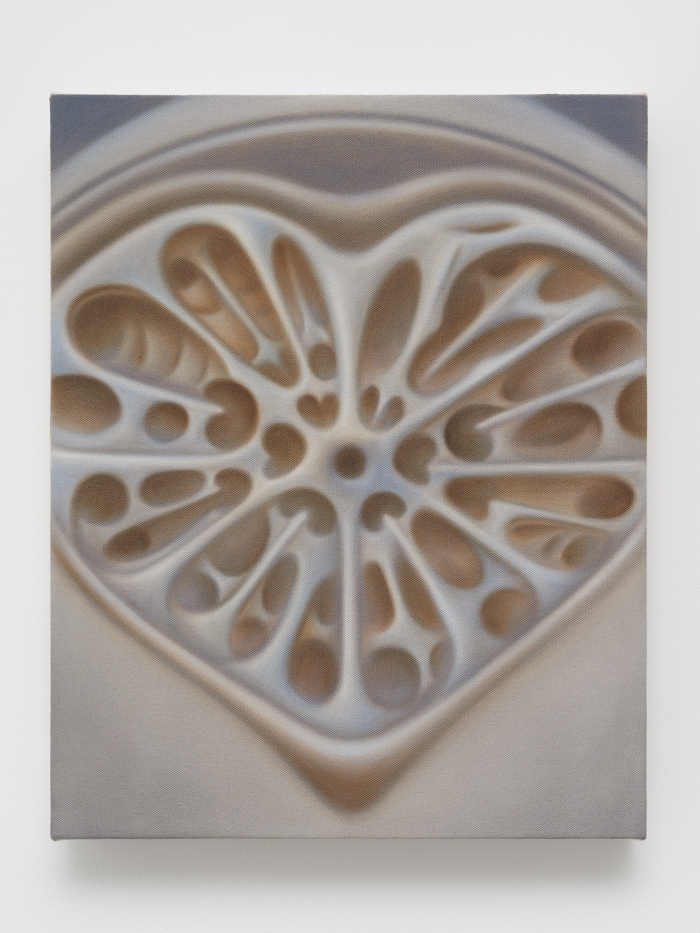
Guided tour | Tuesday, July 25, at 6pm
9x9, Possible Narratives: Maren Karlson
The eighth session will focus on thes pieces 𝘓𝘶𝘮𝘦𝘯, 𝘝𝘢𝘨𝘶𝘴 (𝘛𝘩𝘦 𝘞𝘩𝘦𝘦𝘭𝘴 𝘔𝘺 𝘔𝘢𝘴𝘵𝘦𝘳𝘴) & 𝘊𝘺𝘱𝘩𝘦𝘳, by Maren Karlson.
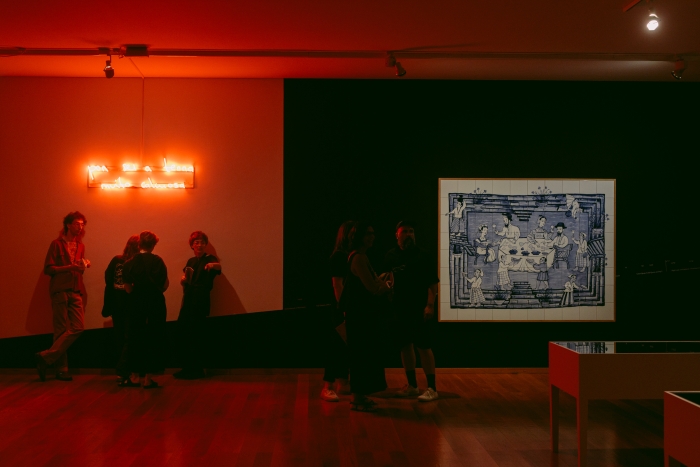
Guided tour | Thursday, July 27, at 6pm
9x9, Possible Narratives: Rouzbeh Akhbari
The seventh session will focus on the piece 𝘗𝘰𝘳 𝘴𝘦𝘳 𝘢 𝘛𝘦𝘳𝘳𝘢 𝘮𝘶𝘪𝘵𝘰 𝘊𝘢𝘭𝘮𝘰𝘴𝘢, by Rouzbeh Akhbari.
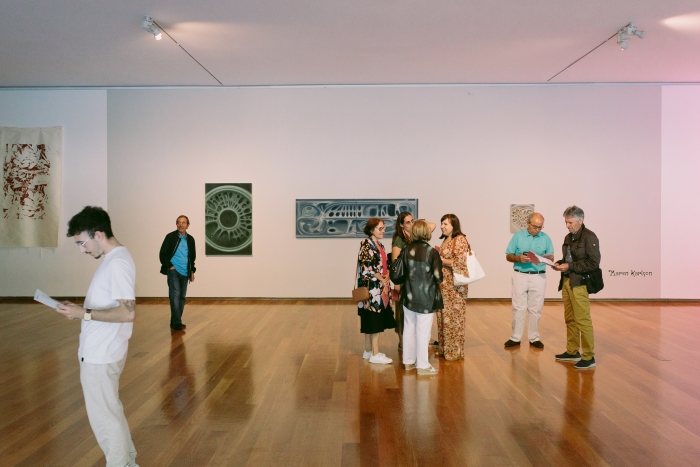
Saturday, August 5, at 4 pm
Guided tours of the exhibition
The Galeria Municipal do Porto carries out a guided tour of the exhibitions on the first Saturday of each month.
